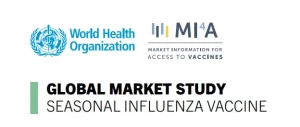Painkillers and Contraceptives: Risky Combination for Women
- Why Lecanemab’s Adoption Faces an Uphill Battle in US?
- Yogurt and High LDL Cholesterol: Can You Still Enjoy It?
- WHO Releases Global Influenza Vaccine Market Study in 2024
- HIV Infections Linked to Unlicensed Spa’s Vampire Facial Treatments
- A Single US$2.15-Million Injection to Block 90% of Cancer Cell Formation
- WIV: Prevention of New Disease X and Investigation of the Origin of COVID-19
Painkillers and Contraceptives: Risky Combination for Women
- Red Yeast Rice Scare Grips Japan: Over 114 Hospitalized and 5 Deaths
- Long COVID Brain Fog: Blood-Brain Barrier Damage and Persistent Inflammation
- FDA has mandated a top-level black box warning for all marketed CAR-T therapies
- Can people with high blood pressure eat peanuts?
- What is the difference between dopamine and dobutamine?
- How long can the patient live after heart stent surgery?
Painkillers and Contraceptives: Risky Combination for Women.
BMJ: Caution Required When Combining Painkillers and Contraceptives! Data from Over 2 Million Individuals Shows an 11-Fold Increased Risk of Venous Thromboembolism with Non-Steroidal Anti-Inflammatory Drugs (NSAIDs) and High-Risk Contraceptives.
The advent of hormonal contraceptives has empowered women with family planning options, increasing their opportunities for education and employment. Today, approximately 500 million women worldwide use hormonal contraceptives daily.
However, it’s essential to remember that contraceptives are still medications with potential adverse effects and interactions with other drugs. Combination hormonal contraceptives containing estrogen and progestin are recognized risk factors for deep vein thrombosis and pulmonary embolism. Estrogen can promote the transcription of various clotting factors, and progestins have complex effects on the coagulation system.
Simultaneously, the use of non-steroidal anti-inflammatory drugs (NSAIDs) has been positively correlated with thrombotic diseases. Given that both these drugs are commonly used by women, does their combination further increase the risk of blood clots?
On Sep 21, a research team from the University of Copenhagen in Denmark published a paper in the British Medical Journal, analyzing a decade of follow-up data for approximately 2 million Danish women.
They found that the combination of NSAIDs and high-risk hormonal contraceptives significantly increased the risk of venous thromboembolism, with an incidence rate ratio (IRR) of 11 compared to those not using NSAIDs. This risk remained higher than that of individuals using NSAIDs alone, indicating a significant cumulative effect.

Paper Title Image
The risk associated with hormonal contraceptives varies depending on their type. Researchers categorized hormonal contraceptives into three groups based on their correlation with venous thromboembolism: high, medium, and low risk. High-risk hormonal contraceptives included combination estrogen-progestin transdermal patches, vaginal rings, and oral pills containing 50μg ethinylestradiol/desogestrel/norgestrel/levonorgestrel/drospirenone/cyproterone acetate.
Medium-risk hormonal contraceptives encompassed all other combination oral contraceptives and injectable medroxyprogesterone. Single progestin pills, implants, and hormonal intrauterine devices were considered low-risk or no-risk hormonal contraceptives.
The study excluded women with a history of thrombotic events, cancer, thrombophilia, uterine or bilateral ovarian surgery, sterilization, or infertility treatment. Ultimately, 2,029,065 participants aged 15 to 49 years with a median follow-up of 10 years were included. During the study period, 8,710 venous thromboembolic events were recorded, with 31.2% being pulmonary embolisms and the remainder isolated lower limb deep vein thrombosis. 2.6% of women died within 30 days of diagnosis.

Among the participants, 529,704 were concurrently using hormonal contraceptives and NSAIDs, with 58% using high-risk hormonal contraceptives.
The most commonly used NSAID was ibuprofen (60%), followed by diclofenac (20%) and naproxen (6%).
Comparing the venous thromboembolism risk of those using NSAIDs alone, contraceptives alone, or the combination of NSAIDs and high-risk contraceptives to those not using NSAIDs or contraceptives, the data in the table below show a significant increase in risk. The combination of NSAIDs and high-risk contraceptives, in particular, led to a striking IRR increase of 50.6.

The following graph illustrates the number of venous thromboembolic events in different groups, highlighting a substantial relative increase despite the absolute numbers not being very high.

While this is a correlational study and does not prove direct drug interactions, considering the widespread use of both these medications, cautious drug selection is advisable.
Painkillers and Contraceptives: Risky Combination for Women
References:
[1] https://www.bmj.com/content/382/bmj-2022-074450
[2] https://www.bmj.com/content/382/bmj.p2043
(source:internet, reference only)
Disclaimer of medicaltrend.org
Important Note: The information provided is for informational purposes only and should not be considered as medical advice.



